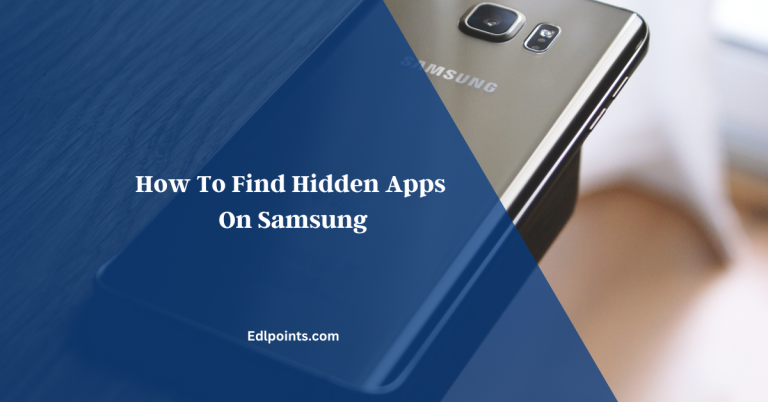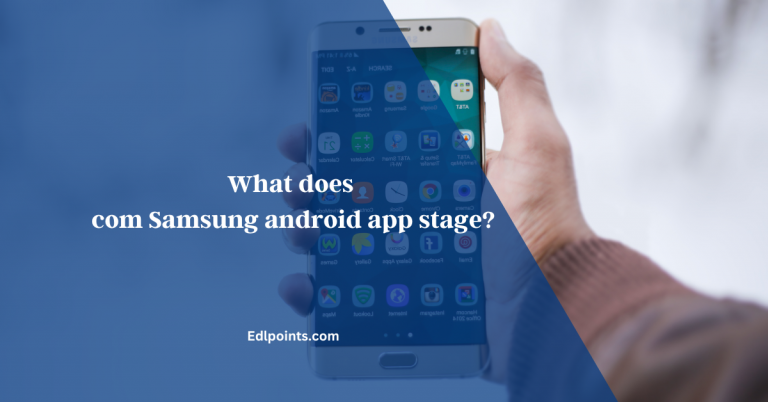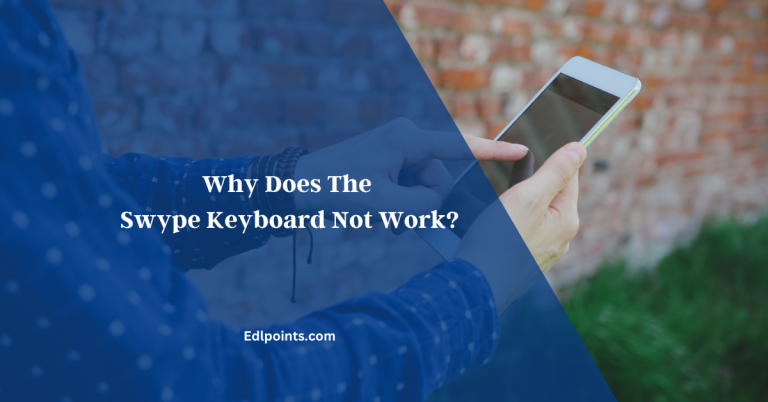What Does Wireless Caller Mean?
In today’s wireless environment, the word “wireless caller” has a lot of meaning. It is critical to understand its meaning and ramifications to navigate modern communication.
This article delves into the notion of wireless callers, explains caller identification, addresses the impact of spoofing, highlights regulatory measures, and offers advice on how to cope with unwanted calls. You may stay informed and empowered in managing your communication experiences by receiving knowledge from wireless callers.
Table of Contents
What does a wireless caller mean?

A “wireless caller” is a person or entity who starts a phone call using a wireless device such as a mobile phone or a VoIP (Voice over Internet Protocol) service.
It denotes a call made by a person or organization without using physical landline connections. In the age of mobile communication, wireless calling has become common, allowing users to make and receive calls from nearly any place with cellular network coverage or Wi-Fi connectivity.
Why Does a Phone Display a Wireless Caller Instead of a Number?
When a phone displays “Wireless Caller” instead of a specific phone number, it indicates that the incoming call does not have caller identification information readily available. There are several reasons why this may occur:
- Caller ID Blocking:
- The caller intentionally blocks their caller ID information from being displayed.
- This can be accomplished by dialing a specific code or by changing their phone settings to conceal their identity.
- Network Limitations:
- In some cases, the network infrastructure or the service provider may not transmit the caller ID information correctly or may have limitations that prevent the caller ID from being displayed.
- VoIP or Internet-based Calls:
- With Voice over Internet Protocol (VoIP) services or Internet-based calling apps, the caller’s identification may not be properly transmitted or recognized by the recipient’s phone, leading to the display of “Wireless Caller” instead of a specific number.
- Technical Issues:
- Occasionally, technical glitches or errors within the phone or the network can fail to retrieve or display caller ID information accurately.
It’s important to note that while “Wireless Caller” may appear instead of a number, it does not necessarily indicate malicious intent or spam.
However, it is also common for unwanted or spam calls to block or manipulate caller ID information deliberately. In such cases, it’s advisable to exercise caution and consider using call-blocking features or reporting the calls to relevant authorities.
Is wireless caller spam?
The word “Wireless Caller” does not indicate whether or not a call is spam. When specific caller information is not provided or available, the label “Wireless Caller” displays on the caller ID.
While normal calls from friends, family, or businesses may also appear as “Wireless Caller,” it is crucial to know that some spam or undesirable calls may purposefully block or manipulate their caller ID information in order to appear as “Wireless Caller” or display a different number entirely. Robocalls, frauds, telemarketing calls, and phishing efforts are examples of these types of calls.
Other criteria to examine when determining if a call is spam include the call’s content, the caller’s demeanor, and whether the call matches your expectations or previous interactions.
If you feel a call is spam or unwelcome, proceed with caution, avoid revealing personal information, and consider utilizing call-blocking settings or reporting the call to your service provider or the appropriate authorities.
How do you identify a wireless caller?
Identifying a wireless caller can be challenging, especially when specific caller ID information is not available. However, there are a few strategies you can employ to gather more information and potentially identify the caller:
- Contextual Clues:
- Pay attention to any contextual clues provided during the call.
- Listen for the caller’s voice, accents, background noises, or any information they disclose that could help you identify them.
- Call Return:
- If the call is important and you feel comfortable doing so, you can try calling the number back.
- Sometimes, the caller may have blocked their caller ID for outgoing calls but not for incoming calls.
- By calling back, you might be able to identify the caller if they answer or have a voicemail greeting that reveals their identity.
- Reverse Phone Lookup:
- Utilize online reverse phone lookup directories or search engines specifically designed for phone number searches.
- These services can provide information about the caller, such as their name, location, or even user reviews and complaints associated with that number.
- Mobile Apps:
- Consider using mobile apps that help identify and block spam or unwanted calls.
- These apps can display caller information in real-time based on their extensive databases and user-reported data.
- Examples of such apps include Truecaller, Hiya, and CallApp.
- Contact your Service Provider:
- Reach out to your phone service provider and inquire if they offer any additional caller identification services or if they can provide assistance in identifying the caller.
It’s important to note that while these methods can be helpful, they may not always guarantee accurate identification, particularly if the caller has intentionally obscured their identity or if the information is not available. If you suspect malicious intent or receive persistent unwanted calls, it’s advisable to report the issue to your service provider or local authorities for further investigation.
What are wireless caller plans?

Wireless caller plans, sometimes referred to as calling plans or phone plans, are subscription-based services provided by wireless service providers that enable people or organizations to make calls over wireless networks. These plans usually include voice calling as a key feature, as well as messaging (SMS/MMS) and data usage.
Here are some key aspects of wireless caller plans:
- Minutes Allocation:
- Wireless caller plans often come with a specified number of minutes allocated for voice calls.
- These minutes can be used for making calls to local or long-distance numbers, depending on the plan.
- Local and Long-Distance Calling:
- Wireless caller plans usually differentiate between local and long-distance calling rates.
- Local calls are typically included within the allocated minutes or charged at a lower rate, while long-distance calls may incur additional charges.
- International Calling:
- Some wireless caller plans offer international calling options, allowing users to make calls to numbers outside their home country.
- International calling rates and included countries vary depending on the plan and service provider.
- Roaming:
- Roaming refers to the ability to make and receive calls outside of your service provider’s coverage area.
- Some wireless caller plans include roaming services, which allow users to use their phones in different regions or countries.
- Roaming charges may apply, depending on the plan and destination.
- Additional Features:
- Wireless caller plans may offer additional features such as voicemail, caller ID, call waiting, call forwarding, conference calling, and more.
- These features enhance the calling experience and vary depending on the plan and service provider.
- Data and Messaging:
- In addition to voice calling, wireless caller plans often include data usage and messaging services.
- Data usage allows users to access the internet, use apps, send/receive emails, and more.
- Messaging services encompass SMS (Short Message Service) and MMS (Multimedia Messaging Service) for text messages, photos, videos, and other multimedia content.
It is crucial to note that wireless caller plans are normally provided by mobile network carriers and may differ in terms of pricing, included features, and availability depending on geographical area and service provider. It’s advisable to compare different plans and choose the one that aligns with your calling needs and budget.
How do you turn off wireless caller?
There are various options to consider if you want to disable or turn off wireless callers based on your unique needs and preferences:
- Do Not Disturb Mode:
- Most smartphones have a “Do Not Disturb” (DND) mode that allows you to silence incoming calls, notifications, and alerts.
- Activating this mode can help prevent disruptions from all incoming calls, including wireless callers.
- You can typically customize DND settings to allow calls from specific contacts or set it to activate automatically during specific times or events.
- Call Blocking:
- Many smartphones include call-blocking tools that allow you to restrict calls from specific phone numbers or unknown callers.
- You can manually add unwanted callers to your block list or enable settings to automatically block calls from private or unknown numbers.
- Third-Party Apps:
- There are several third-party call-blocking apps available for download from app stores.
- These apps often provide more advanced features and options for managing and blocking calls from wireless callers.
- Examples include Hiya, Truecaller, and RoboKiller.
- Service Provider Assistance:
- Contacting your wireless service provider can be helpful in addressing unwanted calls.
- They may have additional services, such as call screening, call blocking, or caller ID options, that can assist in managing or blocking wireless callers.
- Report Unwanted Calls:
- If you consistently receive unwanted calls from specific wireless callers, it can be beneficial to report them to your service provider or relevant authorities.
- They may be able to investigate or take appropriate actions against the callers.
It’s important to note that while these methods can help reduce unwanted calls, determined spammers or scammers may find ways to circumvent blocking measures. Staying vigilant, being cautious with sharing personal information, and regularly updating your blocking settings can help mitigate unwanted wireless calls.
How do I turn off the ATT caller ID?
To turn off AT&T caller ID, you can follow these steps:
- Open your phone’s dialer app:
- Launch the app from your home screen or app drawer.
- Access the settings menu:
- Look for the three-dot menu icon or the settings gear icon, typically located at the top or bottom of the screen.
- Locate the Caller ID settings:
- The exact location of the Caller ID settings may vary depending on the phone’s manufacturer and software version.
- Look for options like “Caller ID & Spam” or “Call Settings.”
- Disable Caller ID:
- Once you’ve accessed the Caller ID settings, you should see an option to toggle the Caller ID feature on or off.
- Switch the toggle or checkbox to the “Off” position to disable Caller ID.
- Confirm the changes:
- Some phones may prompt you to confirm your choice before disabling the Caller ID.
- Follow any on-screen instructions to confirm and save your changes.
It’s important to note that the steps above are a general guideline, and the exact process may vary based on the make and model of your phone or the AT&T app you’re using. If you’re having trouble finding the Caller ID settings, you can consult your phone’s user manual or reach out to AT&T customer support for further assistance.
How can I call without caller ID?
To call without displaying your caller ID, you can use one of the following methods:
- Call ID Blocking Code:
- Most countries have a specific code you can dial before making a call to block your caller ID.
- The code varies depending on your location. In the United States, for example, you can dial *67 before the phone number you want to call.
- In the United Kingdom, the code is 141.
- Check with your local service provider or search online for the caller ID blocking code in your country.
- Example: To call a number without showing your caller ID in the US, you would dial *67 followed by the phone number *67-XXX-XXX-XXXX.
- Phone Settings:
- On some smartphones, you can disable caller ID directly in the settings.
- The option may be located under the “Phone” or “Calls” settings, typically labeled as “Show my caller ID,” “Caller ID,” or “Outgoing Caller ID.”
- Simply toggle the option to hide your caller ID.
- This setting’s placement may differ depending on the phone type and software version.
- Use a Calling App:
- You can make calls using certain calling apps or VoIP services without showing your caller ID.
- These apps often have an option within their settings to disable caller ID.
- Examples of such apps include Skype, Google Voice, and various anonymous calling apps available on app stores.
- While these apps can hide your caller ID, some may have limitations or additional charges associated with making calls to certain numbers or destinations.
Remember that hiding your caller ID is subject to local regulations, and some recipients may have their own settings or preferences that prevent unidentified calls from coming through. It’s important to respect privacy and use this feature responsibly and appropriately.
Conclusion
Finally, in today’s mobile-centric environment, grasping the concept of wireless callers is critical. While the phrase “Wireless Caller” may appear on your phone’s display when caller identification information is missing, it does not always imply spam or criminal intent. However, unsolicited calls and caller ID spoofing continue to be issued. We can better control our communication and protect ourselves from potential threats by being educated about wireless caller identification, utilizing accessible tools such as call-blocking features, and reporting unwanted calls. Keep an eye out and make the most of your wireless calling experience.
FAQ
The “+1” on your caller ID typically indicates that the incoming call is from the United States or Canada. It is the country code used for these two countries in international phone numbers.
If someone has blocked your number, you cannot directly call them from your phone. When a person blocks your number, it means they have intentionally chosen to prevent calls and messages from reaching them. Respect their decision and avoid contacting them by alternate ways or unknown numbers.
To reduce the chances of your phone being spoofed, be cautious with sharing personal information, avoid answering suspicious calls, and consider using call-blocking apps or services. Additionally, stay updated with security patches and firmware updates, and report any instances of caller ID spoofing to your service provider.






One Comment